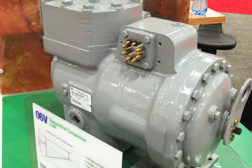Home » CO2 refrigeration
Articles Tagged with ''CO2 refrigeration''
Company Working Toward 2015 Goal to Use Natural Refrigerants for All New Cold-Drink Equipment
Read More
Making a Case for New Refrigerants, Technology
Plants, Restaurants, Supermarkets Benefit from Latest Developments
Read More
Sustainable Refrigeration is Only ‘Natural’
New Refrigerants Still Need Careful Control, Simplicity
Read More
Restaurant Applications on Display at NRA
Contractors Find Expertise Needed Beyond Ice Machines, Freezers, Coolers
Read More
Looking Beyond Low GWP
Environmental Regulators Should Consider Refrigerant Performance as well as Global Warming Potential
Read More
Seeking to Smooth Out Natural Refrigerants’ Rocky Road
IIAR Conference Addresses Path to Natural Refrigerants
Read More
Copyright ©2024. All Rights Reserved BNP Media.
Design, CMS, Hosting & Web Development :: ePublishing










